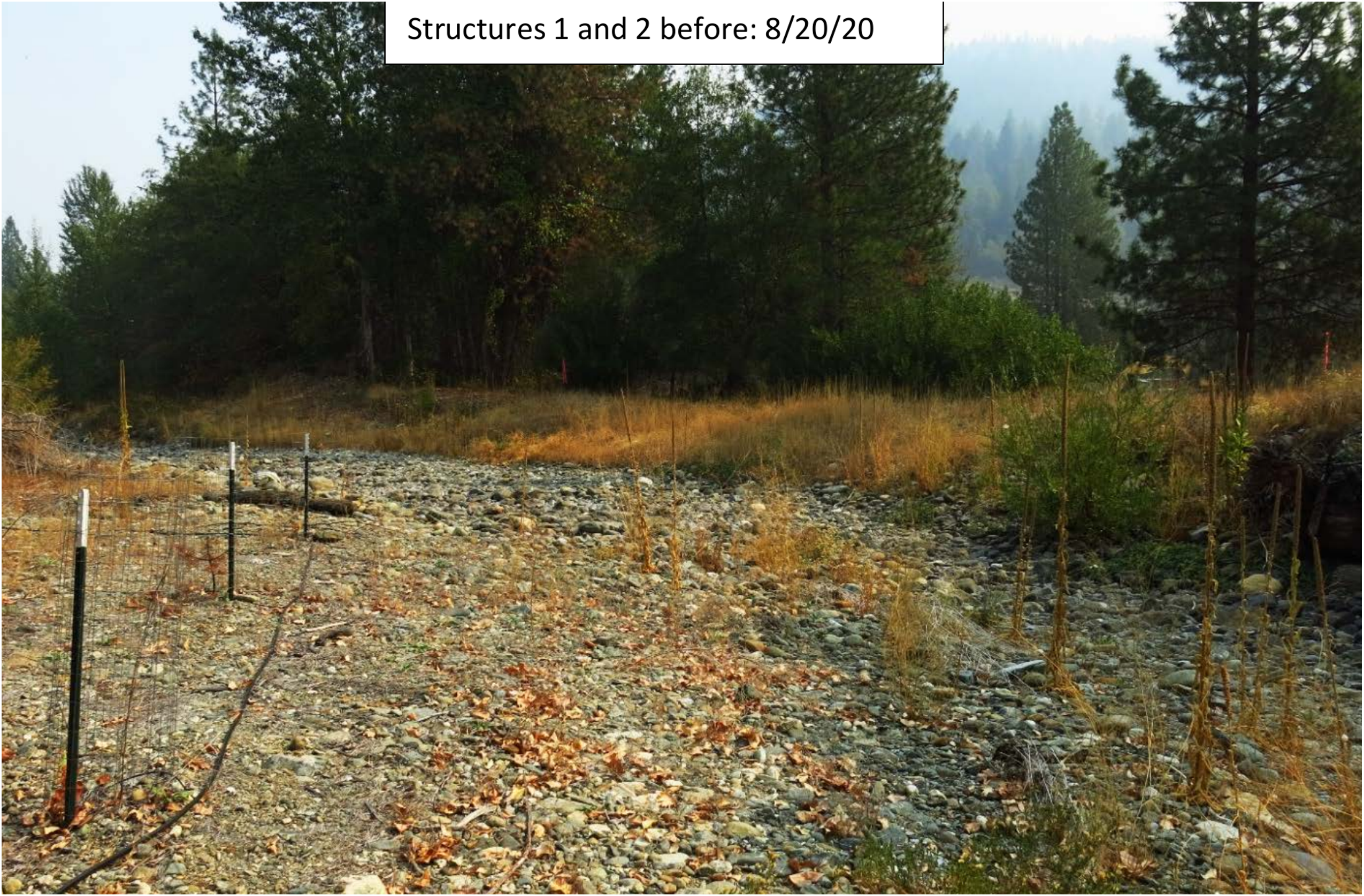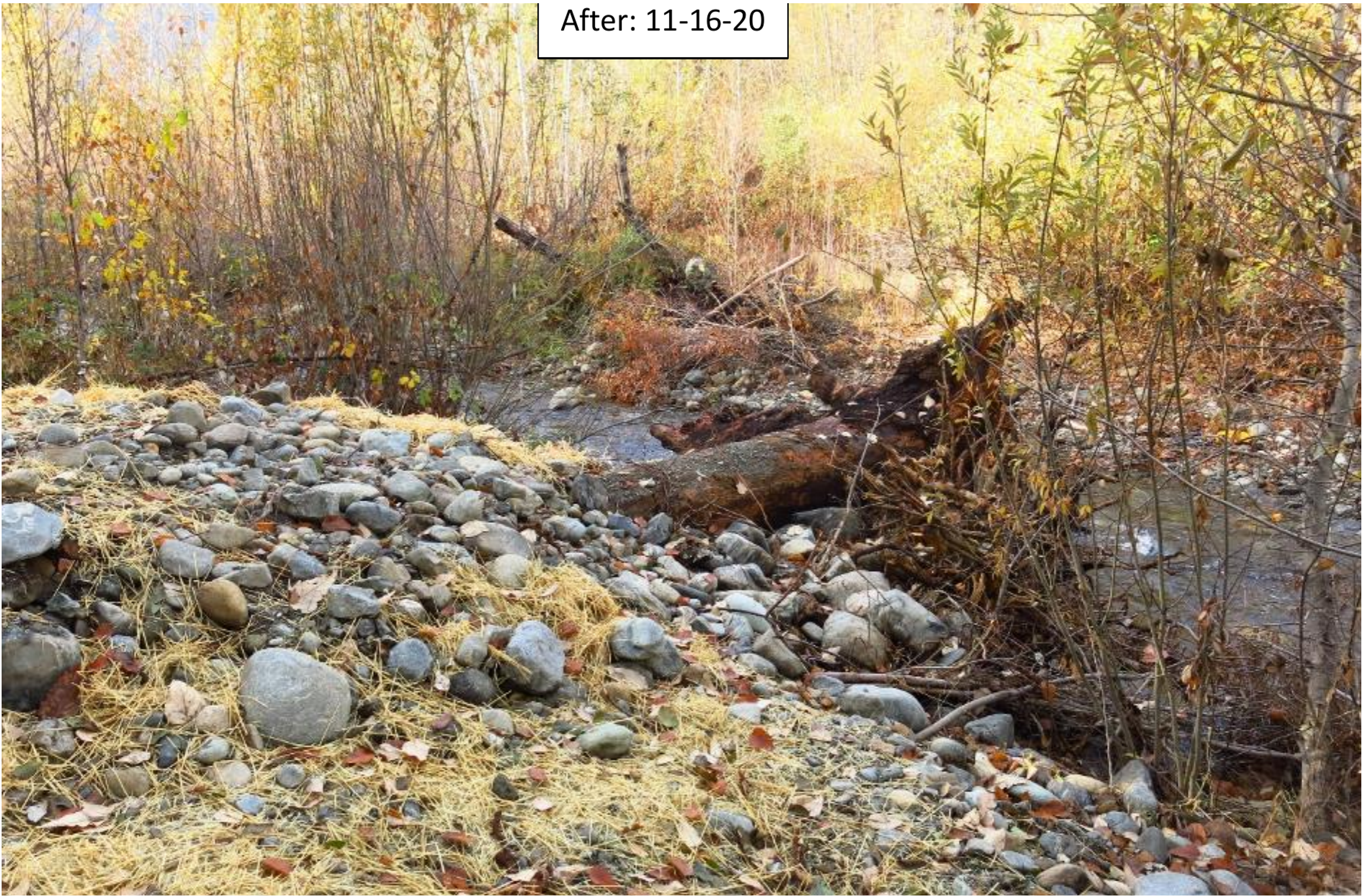Seiad Creek Off-Channel Connection Project
Project Lead: Mid Klamath Watershed Council
Location of Project:
Durazo Pond: 41°50’44.44″N, 123°11’24.86″W
Stender Pond: 41°51’12.50″N, 123°10’8.05″W
Alexander Pond: 41°51’15.26″N, 123°10’1.63″W
Description of Project: This project seeks to ensure connection to three high value off-channel habitats along Seiad Creek. These three off-channel ponds are part of a larger project along Seiad Creek to increase the amount of available off-channel habitat for ESA-threatened Coho salmon. Numerous studies of the Klamath Watershed Coho salmon populations point to off-channel rearing habitat, specifically winter habitat, as a limiting factor in Coho populations. The ponds targeted for this project are previously contracted ponds built by the Mid Klamath Watershed Council (MKWC) and the Karuk Tribal Fisheries Program. The Alexander and Stender Ponds were constructed in 2011 and the Durazo Ponds was built in 2014. These three habitats offer a total of 19,000 sqft of vital off-channel rearing habitat. With Seiad Creek containing one of the few stable Coho populations in the the Mid-Klamath subbasin, ensuring these important slow water habitats are available is crucial to the survival of the population.
As the climate continues to warm, the Klamath River salmonid populations are highly susceptible to the effects of warming climate. Lower snow packs and irregular precipitation totals are creating extremely stressful conditions for an already depressed population. MKWC’s off-channel ponds allow for a refuge from both stessful/lethal mainstem river temperature and erratic flows and flooding that can occur in the winter months. These groundwater fed off-channel ponds provide a stable environment for juvenile fish that is rarley available these days in the mainstem creeks and rivers. Studies have shown that these types of off-channel habitats can increase juvenile survival in freshwater habitats. Several graduate students, along with the Karuk Tribe, have shown that ability for fish to access these types of slow water habitats is extremely important to their helath and survival in freshwater systems. Two graduate student studies have shown that fish that use these ponds grow at much faster rates than fish only using the creek.28. Would an existing commercial, recreational, or subsistence fishery be enhanced as a result of the project? If yes, describe. If not, is there a future fishery that would potentially be restored through increased habitat as a result of this project? If so, describe. By increasing survival rates of juvenile salmon as they outmigrate to the ocean, this potentially leads to increased chances of returning adult spawners.








